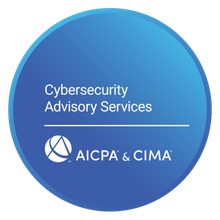Exploring the Most Common Software Development Methodologies
Software development methodologies refer to a set of processes and practices that developers use to create high-quality software products. By providing a framework that guides the development process from planning to implementation and maintenance, these methodologies help ensure that software is developed efficiently and cost-effectively. Some of the most commonly used software development methodologies include Agile, Waterfall, Scrum, Kanban, and Lean. Each of these approaches has its own strengths and weaknesses, making it important for developers to carefully consider the requirements of a project before selecting the most appropriate methodology. In this article, we will explore these different software development methodologies in depth to help you better understand which approach is best suited to your project.
Agile
Agile software development is a popular approach that focuses on delivering high-quality software products quickly and efficiently. It is an iterative and flexible methodology that is based on collaboration, customer feedback, and continuous improvement. The goal of the Agile methodology is to develop working software in short sprints or iterations, allowing teams to respond quickly to changes in requirements or market conditions. This approach emphasizes communication between team members to ensure everyone is aligned throughout the development process.
Advantages:
- Flexibility and continuous improvement: Agile allows for changes to be made throughout the development process, making it easier to adapt to changing customer needs or market conditions. This approach also allows for continuous improvement, enabling teams to refine and optimize their development process over time.
- Short-term goals: Agile sets short-term goals or sprints, which helps teams focus on delivering a specific set of features or functionality within a limited timeframe. This approach helps improve the overall speed of development.
- Effective communication: Agile methodology emphasizes effective and efficient communication between team members, enabling everyone to stay on the same page throughout the development process. This approach helps ensure that the team is aligned on the project's goals and objectives.
Disadvantages:
- Continuous change: Agile methodology allows for changes to be made throughout the development process, which can lead to increased effort from developers. This approach can be demanding for teams, particularly if changes are made frequently.
- Requires experienced developers: To realize its full potential, Agile methodology requires experienced developers who are familiar with the approach and can effectively implement it. Newer developers may require additional training and support to work effectively within this methodology.
Waterfall
The Waterfall software development methodology is a widely used approach in the software industry that follows a linear process, where each stage must be completed before moving on to the next. The Waterfall methodology is straightforward and easy to manage, making it ideal for smaller and less complex projects. It involves breaking down the entire project into smaller, manageable tasks and executing them sequentially, which allows for better control over the project and ensures that all tasks are completed on time and within budget. The Waterfall methodology also helps to reduce risks associated with software development by ensuring that all requirements are met before moving to the next phase of development.
Advantages:
- Provides a detailed outline of the entire process, making it more predictable than other methodologies.
- Predictability allows for better planning and project management, making it easier to estimate the time and resources required to complete a project.
- Relatively simple to manage and implement, making it ideal for smaller and less complex projects.
Disadvantages:
- Very structured, which makes it less flexible and adaptable to change.
- Once a stage is completed, it is difficult to go back and make changes without affecting the entire project.
- Not ideal for larger and more complex projects, which often require more flexibility to adapt to changing requirements and circumstances.
Scrum
Scrum is an agile software development methodology that focuses on delivering high-quality products in a short amount of time. It is based on the idea of iterative and incremental development, where teams work in sprints to deliver working software at the end of each sprint. The Scrum methodology emphasizes collaboration between team members, customer feedback, and continuous improvement. It also encourages teams to break down complex tasks into smaller chunks that can be completed quickly and efficiently. By using Scrum, teams can quickly adapt to changing requirements and deliver high-quality products in a shorter amount of time. The Scrum methodology divides team members into three parts: Product Owner, Scrum Master, and Development Team.
Advantages:
- Efficient and increased development speed: Scrum allows for faster development and delivery of high-quality software by breaking down tasks into smaller chunks that can be completed in short sprints.
- Easier to detect software issues/bugs: The iterative approach of Scrum ensures that software issues are detected and resolved quickly, leading to higher-quality software products.
- Supports strong communication between clients and developers: Scrum emphasizes regular communication between clients and developers, which helps to ensure that the software being developed meets the client's requirements.
- Ideal for smaller teams and projects: Scrum is well-suited for small teams and projects, as it allows for efficient communication, collaboration, and quick adaptation to changing requirements.
Disadvantages:
- Not ideal for larger teams and projects: Scrum may not be as effective for larger teams and projects, as it can become difficult to manage and coordinate the work of multiple teams.
- Constant interaction and communication between clients and developers can be a hindrance to the developers: Although regular communication is important in Scrum, excessive interaction with clients can be a hindrance to the development team's productivity.
- Can lead to inaccurate estimations of project costs and time to complete: Due to the iterative nature of Scrum, it can be difficult to accurately estimate project costs and time to complete, which can lead to budget and schedule overruns.
Kanban
Kanban is a software development methodology that focuses on the continuous delivery of value to customers. It is based on the principles of visualizing work, limiting work in progress, and continuously improving processes. Kanban helps teams to identify bottlenecks in their workflow and optimize their processes for maximum efficiency. It also encourages collaboration between team members and allows them to track progress easily. With Kanban, teams can quickly adapt to changing customer needs and deliver high-quality products faster than ever before.
Advantages:
- Collaboration: Kanban encourages collaboration between team members, leading to faster and more effective problem-solving. This collaboration helps to foster a sense of shared responsibility among team members, which can lead to greater accountability and ownership of the project.
- Ideal for smaller teams: Kanban is ideal for smaller teams working on complex projects. With smaller teams, the visual representation of the work and limited work in progress can help team members to manage and prioritize tasks effectively.
- Visualization: Kanban uses a visual board to represent the status of tasks in the workflow. This helps to identify bottlenecks and make decisions quickly. It also provides a clear overview of the entire process and allows for easy tracking of progress.
Disadvantages:
- Slower progress on difficult tasks: Kanban's focus on limiting work in progress can lead to slower progress on difficult tasks. If one task is particularly challenging, it can slow down the entire development process, leading to longer delivery times.
- High-security requirements: Some projects require high-security measures to ensure data protection, and Kanban may not be suitable for such projects.
- Increased responsibility on team members: Kanban requires team members to take more responsibility for their work and how they organize their time. This can be challenging for some team members who may struggle with self-management or need more guidance.
Lean
Lean Software Development is a methodology that focuses on reducing waste and improving efficiency in the software development process. It is based on the principles of Lean Manufacturing, which was developed by Toyota in the 1950s. The goal of Lean Software Development is to create high-quality software quickly and efficiently while minimizing costs and maximizing customer satisfaction.
Advantages:
- Highly efficient and reduces the waste of money, time, and resources.
- Encourages flexibility and adaptability in software development.
- Emphasizes collaboration between teams and customer feedback.
- Ideal for small to medium-sized projects with a strict budget.
Disadvantages:
- Requires highly experienced and skilled developers.
- Relies heavily on detailed and organized documentation.
- Not ideal for larger projects.
Lean Software Development has gained popularity in recent years due to its focus on maximizing efficiency and reducing waste. By emphasizing collaboration between teams and customer feedback, companies can quickly adapt to changing customer needs and deliver high-quality software in a cost-effective manner. However, the methodology requires highly skilled developers and extensive documentation, which may be a challenge for some teams. Overall, Lean Software Development is an effective methodology for small to medium-sized projects with a strict budget, but may not be suitable for larger projects.
Choosing the Right Methodology for Your Project
Choosing the right software development methodology for your project can make a significant impact on the success of your software development process. Waterfall methodology is suitable for smaller and less complex projects, while Agile methodologies are more flexible and adaptable, making them ideal for larger and more complex projects. Kanban methodology is useful for smaller teams with complex projects, while Lean methodology focuses on reducing waste and improving efficiency in the software development process. Each methodology has its own advantages and disadvantages, and the choice ultimately depends on the specific needs and requirements of your project. By selecting the right methodology, you can ensure that your project is completed on time, within budget, and to the satisfaction of your stakeholders.






